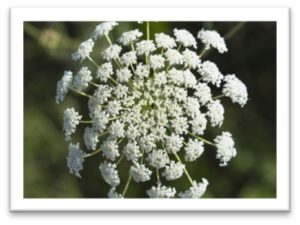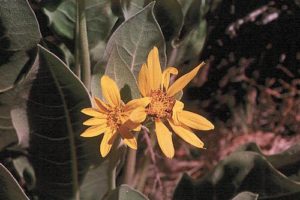SPRING FLOWERS BLOOM IN OUR SHORT STORIES!
This month we publish two short stories featuring characters from our latest and upcoming series. Our theme: spring flowers.
First up is “Queen Anne’s Lace.” Cora Countryman is the protagonist of D.Z. Church’s new series set in Wanee, Illinois in the 1870s. Cora runs a boardinghouse and sleuths through the small town. The first book, Unbecoming a Woman, will be published in the fall.
Janet’s story, “Cemetery Flowers,” features the protagonist of her recent novel, The Sacrificial Daughter, which takes place in fictional Rocoso County, California. Kay is a geriatric care manager. In this story, she’s on a mountain hike with her good friend Sam Jermyn.
Enjoy!
Queen Anne’s Lace
by D.Z. Church
Cora Countryman sat on a rock in a fast running stream that bisected her brother Jess’s farm, watching a stand of delicately flowering Queen Anne’s Lace bobbing white in the breeze. Cows grazed nearby, a fat catfish swam in the shadows of the hazelnut bushes, and bugs glistened on a summer breeze that wafted the perfume of carrot, parsnips, and timothy grass warmed by the sun.
 Across the stream, a white fence boxed in three graves. One was fresh; two were not. Cora waded across the knee-deep water, the hem of her plain calico smock held high, her feet bare, and leaned on a fence post. The new grave was marked by a plank, two question marks and a date scratched into the wood.
Across the stream, a white fence boxed in three graves. One was fresh; two were not. Cora waded across the knee-deep water, the hem of her plain calico smock held high, her feet bare, and leaned on a fence post. The new grave was marked by a plank, two question marks and a date scratched into the wood.
Jess had found a man and a woman right here, their bodies near tied in knots, their heads in the flowing stream, the girl clutching flowers in one hand. He buried them, no postmortem by the town’s doctor, no undertaker, nothing but a few words muttered over their open grave.
Not that Cora was a romantic, far from it. As soon as she was able, she intended to leave her hometown, her brother, her mother (wherever she was), and her suitors to see the world. She spun in her bare feet at the possibilities – London in the fog, Boston in the rain, Egypt in the sun, dark men with dark ways. She would be fearless but carry a derringer for insurance.
She spun again and tripped. Checking her feet, she discovered a fire ring, its rocks jumbled. The fire had been dashed by water, leaving a sheen on the charcoal. In the same rush that knocked rocks aside, a tin cup had tumbled under a neighboring bush.
“Cora,” Jess called from upstream, wiping his hands clean on a thick stand of grass. “Louisa has supper on the table.”
Cora held up the tin cup. Jess joined her, fingering the cup as she had, then shrugged.
“How old were they?” Cora asked, eyeing the fire ring for more clues.
“Young. He was in trousers over a red union suit, which served as his shirt. He’d pushed up his sleeves in the heat. The girl was young, maybe sixteen, in a plain blue calico dress, short like yours. They looked to be out on a picnic by the hamper I found.”
“When you found them side-by-side their heads underwater, weren’t you curious?”
Jess handed her the cup, wiping his hands on his trousers. “Just wanted to get them in the ground. The boy had welts on his arms, and they had thrashed about before they died. I didn’t want what they had. No mystery there.”
“They might have been murdered or committed a lover’s suicide to be together forever. What about their families?”
“They were diseased, Cora. The best thing to do was get them buried.” Jess began picking Queen Anne’s Lace, gathering the tall stems in his left hand, the delicate white heads of the flowers forming a lacy umbrella. “There was a name in the basket. When I gave it to the Constable, he said he’d track down their folks.”
 “What flowers was she holding?” Cora asked, toeing the ground around the fire ring. When a tuber emerged from the coals, she lifted it from the ground with her toes. One end was cut. She let it fall, wiggling her toes in the charcoal.
“What flowers was she holding?” Cora asked, toeing the ground around the fire ring. When a tuber emerged from the coals, she lifted it from the ground with her toes. One end was cut. She let it fall, wiggling her toes in the charcoal.
“These.” As he shook the lacy flower heads, several ladybugs took flight.
“Not those?” Cora pointed to a stand of white lacy-headed flowers downstream.
Jess grinned. “Do you find mystery everywhere?”
“You missed it, but I’m right, right?”
“By the welts, it must have been.” Jess stared at the waving purple-spotted stalks— Queen Anne’s Lace to the innocent, deadly Water Hemlock to the rest. A nibble of the root, a touch of the stem, a tasty brew of tea, and a ghastly wait for death.
“The girl dug a tuber to make tea for their picnic.”
“Believing it was parsnip by the smell,” Jess said, holding the cup to Cora’s nose.
“Purple spots will kill you lots.”
“As our thieving mother used to say,” Jess said, turning for the farmhouse and supper.
Cemetery Flowers
by Janet Dawson
“The flowers are spectacular,” I said as we emerged from the pines into the meadow. There wasn’t much left of the old mining camp at the end of the trail. Just masses of wildflowers, blooming amid the detritus and crumbling foundations.
 It was late May. The wildflowers were putting on a show—bright yellow monkeyflower and purple lupin, showy milkweed and fireweed. The yellow flowers of mountain mule ears contrasted with climbing vine of purple American vetch. Others I couldn’t identify. I’d have to consult the wildflower book in my pack.
It was late May. The wildflowers were putting on a show—bright yellow monkeyflower and purple lupin, showy milkweed and fireweed. The yellow flowers of mountain mule ears contrasted with climbing vine of purple American vetch. Others I couldn’t identify. I’d have to consult the wildflower book in my pack.
“That early rain made a difference.” Sam took off his ball cap, revealing red-gold hair that glinted in the midday sun. He wiped sweat from his forehead and put the cap back on his head. After taking a drink from his water bottle, he said, “I’m hungry. Let’s eat.”
We’d started our hike early this morning. It was three miles on a trail that started out as a dirt road and narrowed to a path as it climbed into a canyon. It followed a creek through tall pines and jumbled rocks, went over a ridge and descended into the meadow.
There wasn’t much left to show that this settlement had once been inhabited. At one time there had been echoes of the past—building foundations, old flumes and rockers, a small cemetery. The foundations had crumbled into rocks and dust. The equipment had disappeared and so had some of the gravestones, taken by artifact-seekers.
We sat down on a wide flat-topped rock and delved into our packs. I’d made sandwiches and Sam provided fruit and veggies. We finished our meal with a couple of brownies. I felt warm and drowsy and shut my eyes for a moment.
“Kay, we’re going to have to start back soon.”
“Three miles up, three miles back.” I smiled. “I know. But I want to look at the cemetery before we leave.”
We packed up the lunch remains, I walked to the cemetery. The fence that had once enclosed it was gone, except for a few posts standing like sentinels. The tombstones that remained were either tilting or flat, those batter and broken. Most of the inscriptions had weathered away. I peered at one, making out an inscription and a date. Wildflowers bloomed here, too, amid the graves.
Outside the cemetery perimeter I saw a mound covered not with flowers, but with a broken stone. No wildflowers here. I couldn’t say why, but it bothered me. I moved closer and knelt by the mound. There was loose soil at the side. Perhaps an animal had been digging.
Something caught my eye. I picked up a stick and poked at the dirt. Then I stopped. “Sam, that’s—”
“A finger bone,” he finished. “It’s a cemetery, so not surprising.”
“But that is.” I pushed aside a dirt clod to reveal a wrist bone. “I don’t think nineteenth century gold miners had wristwatches.”
“Not with yellow plastic bands.” Sam frowned. “Remember that girl who went missing last fall?”
I nodded. “Someone saw her getting into a pickup truck on the north side of town. The description said she was wearing jeans, a pink shirt and a yellow watch.”
Sam had his phone out. “No signal. I’ll hike back up the ridge. Surely I can get a signal there.”
I waited, wondering if this was the missing girl, and how she got here. It took another hour for Sam to return and an hour past that before deputies from the sheriff’s office showed up, on horseback. We watched as they exhumed the grave, carefully revealing the contents.
 The flesh was gone, but the skeleton remained. So did the remnants of clothing, jeans and pink shirt, now stained with soil. The yellow plastic watchband was as bright as the blooms on the nearby mule’s ears.
The flesh was gone, but the skeleton remained. So did the remnants of clothing, jeans and pink shirt, now stained with soil. The yellow plastic watchband was as bright as the blooms on the nearby mule’s ears.
“I hope they find some evidence that tells them who killed her and put her there,” I said.
Sam stood with his arm around me. “So do I.” He looked at his own watch. “We’d better get going, or it will be dark by the time we get to the trailhead.”
We hiked back. I was quiet, thinking about cemeteries and wildflowers.
